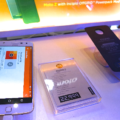Hello Moto. Motorola smartphones are back again in the Philippines. The brand now under Lenovo launched three new lower- to mid-range priced smartphones led by the popular Moto X, Moto G and Moto E. These Moto phones, first released in 2013, helped Motorola get back in the smartphone race again.
The Moto X is Motorola’s flagship that features 5.2 inch full HD AMOLED display with Gorilla Glass 3. The phone’s camera shoots 13 MP images and can also shoot 4K videos. The front-facing camera is 5 MP. While battery capacity is at 3000 mAH. (Recently, though, Motorola has announced the coming of the third generation Moto X, which sports a larger display.)
This second generation LTE capable Moto X is powered by a Qualcomm Snapdragon 801 2.5 Ghz quad-core processor and fitted with 2 GB of RAM. Internal storage is at 16 GB and expandable only through OTG USB drive since the phone, a unibody solid piece of device with unremovable battery, doesn’t have any micro SD slot.
Moto X user experience is as close as to enjoying an Android Lollipop OS in its purest form, except for some smart embedded features that make the phone adapt or respond to voice, motion, and user’s habits.
Because the Android is almost stock, the Moto X is undeniably fast without the drag or lag—and sometimes confusion—brought by unnecessary bloatware.
The Moto X has features up its sleeves that generate the cool factor. For example, to activate the phone’s camera without pressing on the camera icon on the display, you just shake the device via twisting motion of the wrist. To shift the camera from front to rear, you also do the same twisting. To silence the phone when its ringing, you wave your hand on top of the display and the ringing volume automatically stops. To activate the flashlight, do a chop motion while holding the device.
When you’re driving, the Moto Assist feature can read messages for you, tell you who’s calling, or play music via Bluetooth or headphone jack. The phone’s voice activated feature is also quite accurate at executing commands like reading messages or calling a contact.
Moto X camera performs well when shooting indoor and outdoor scenes or subjects. Indoor shots, however, appear to be grainy, but the lens sensitivity is remarkable in low lit situations. Focusing is fast even if you move to and away from the subject—it gets what needs to be shot. The camera display doesn’t feature a shutter icon to take photos, rather upon focusing or pointing the lens at a subject, you just touch the screen and the image gets captured. You use two (thumb and pointer) via pinching action to zoom in or out on a subject.
There are only a number of functions in the camera’s menu such as HDR, Flash, Timer, Widescreen Shot and Panorama, but you can still tinker with the camera’s focus and exposure. You can activate the menu by swiping from the left of the screen during camera function.
Moto X has one of the nicest minimalist design—from the curve appeal and velvety feel of the back cover to the edge-to-edge display highlighted by two tiny bars of metal speakers on top and below. The all-black appearance highlighted by metallic grey framing render a kinda of formal and expensive look on the phone. Size wise, it fits comfortably in one hand, allowing you to navigate the device with just the thumb. The keypad is also nicely well put as there are ample space between the letters and you can type without hitting the wrong letter.
In addition, the display is admittedly very eye-friendly—not too bright but crisp and you can read the contents clearly even when outdoors in broad daylight.
In Moto X, Motorola has successfully executed a clean Android user experience devoid of all the fuss and worries found in flagships that try to outdo one another. Everything about this smartphone speak of desirability—from the design, display and overall specs, including the price of only Php16,999. If you’re not after bigger storage or bigger screen size, then you might want to try the Moto X for a change.















